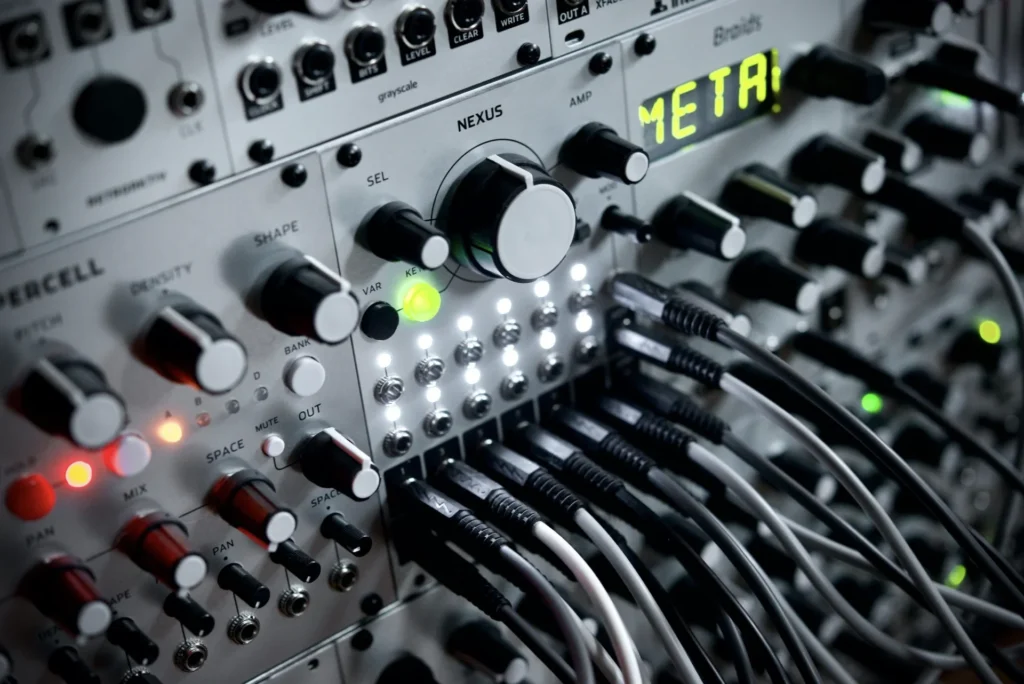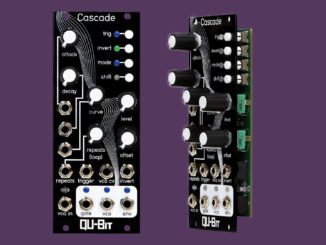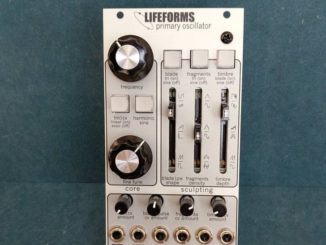Grayscale Nexus is a new souped-up version of the Mutable Instruments Frames morphing VCA with eight more VCA channels, improved hardware, and more.
Mutable Instruments has been out of business since 2023. But the modules still live on either as second-hand or as clones from many smaller and bigger companies.
However, some developers take the ideas and continue with them, not just as a 1:1 clone but in the form of new modules with new functionality. Grayscale did that with its supercharged Clouds version called Supercell. Now, they are going down the same path with the Frames module from Mutable.
Grayscale Nexus
Nexus is a new VCA module based on the Mutable Instruments Frames module. It is the same size as the original, 18HP, but the hardware and functions have changed significantly.
Grayscale’s new module brings back the unique keyframing concept of the original Frames module but in a souped-up version. To do this, the developers use more modern hardware with improvements.
More Channels
The biggest difference is the expanded I/O offering. Unlike MI Frames, which has four VCA channels, Nexus has 12 VCA channels, giving you more options to explore the keyframing concept.
Like MI Frames, Nexus is not a usual VCA module. It uses the Keyframing technique, which originated from digital animation.
A keyframe marks the VCA levels of Nexus’ 12 different channels at a single moment in time. The module allows you to capture up to 32 keyframes in a timeline. You can control the position of the latter with the big knob on the front panel manually, via CV, or with a patched trigger source.
This keyframe function allows you to morph channels. Built-in algorithms make these transitions between different levels super smooth. Thanks to the option to process audio as well as CV, the module is very versatile. With the additional 8 channels, even more keyframing fun is possible.
Multiple Functions & New Additions
You can use Grayscale Nexus as a VCA mixer, sequencer using a trigger source, an LFO, envelope generator, attenuator, clock divider, sequential switch, multi-channel crossfader, and more.
A newly designed user interface allows you to use several functions simultaneously, unlocking extensive serial or parallel processing. That’s not all. It also comes with a new copy keyframes function and an expanded memory, giving you 12 presets instead of a single slot. There is also a new auto-save function.
Unlike the original, the souped-up Frames version also offers simplified stereo operation with individual mix outputs for each row and internal mono-to-stereo normalizations.
Nexus ships with new randomization options that further expand the concept. These include the ability to randomize keyframe levels and step through keyframes, turning the module into a sequencer. Plus, there is a new VCA calibration option.
All these new features also come with a small minus. It consumes more power: 148mA on the +12V and 77mA on the -12V, whereas the original draws 90mA and 30mA.
Nexus is not open-source yet, but the other Grayscale modules can be found on Github. Emilie Gillet calls for this in her open-source plans for developers who use the circuits and codes.
First Impression
A demo video for the new Grayscale Nexus is not yet available. I really like how the concept has been expanded. The original Frames from Emilie Gillet was already a very powerful module. This one takes it to a new level.
Grayscale Nexus is available now for $399 with a black or gray panel.
More information here: Grayscale






Not participating or is participating in the Open Source community? (Was that a typo?)
no typo, they are not sharing their modifcations to the open-source community
Ugh, after all of Emilie’s contributions this makes this a no-buy for me. She was so generous and they could have at least honored her wishes. (Not sure if she placed a license per se, but if she did that would be in violation of it.)
Thanks for the clarity!
I rectified it: the other modules are open-source. Nexus is not yet open-source but will follow in the near future.
I have no experience with Frames, but going from 4 channels with 4 attenuators to 12 channels with a shared attenuator doesn’t seem like a great workflow. I’m a big fan of Grayscale (and MI). So, I look forward to being wrong. Bring on the demos!